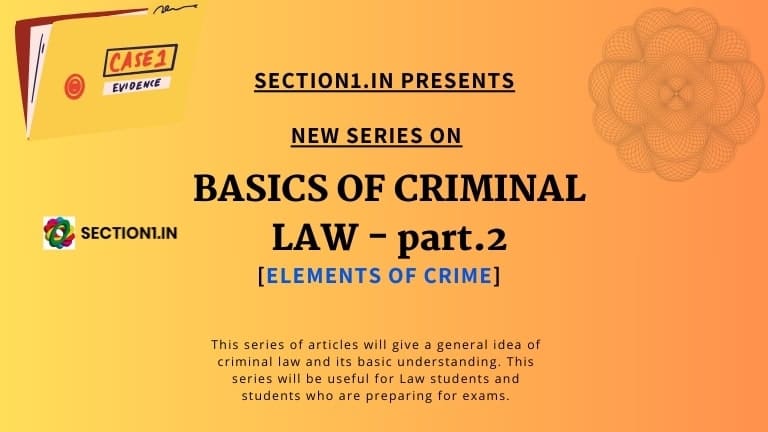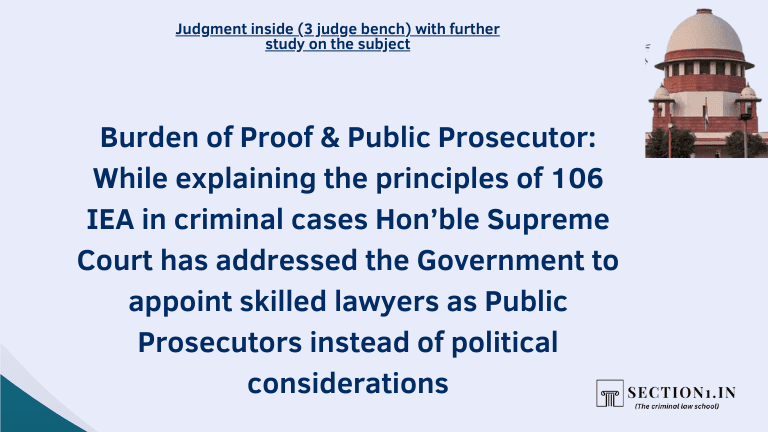Elements of Crime – Study.1
Crime is a complex phenomenon that has captivated society for centuries. It encompasses a range of behaviors that are considered unlawful and punishable by the state. While the specific definitions and punishments for crimes may vary from country to country, there are certain elements that are common to most criminal offenses. In this article, we will explore the key elements of crime, with reference to legal definitions and real-world examples.
1. Actus Reus
The first element of crime is actus reus, which is Latin for “guilty act.” This refers to the physical or overt behavior that constitutes the criminal offense. For example, in the case of theft, the actus reus would be the taking of someone else’s property without their consent. Another example is assault, where the actus reus would be causing harm or attempting to cause harm to another person.
In some cases, the actus reus may be less obvious. For instance, in the crime of fraud, the guilty act may be a series of misleading statements or actions that result in financial gain for the perpetrator. In such cases, proving the actus reus can be more complex and may require expert testimony or forensic evidence.
2. Mens Rea
The second element of crime is mens rea, which is Latin for “guilty mind.” This refers to the mental state or intent required for a criminal offense. While some crimes require a specific intent (such as murder or arson), others only require negligence or recklessness (such as driving under the influence or reckless endangerment).
In some cases, proving mens rea can be challenging because it involves delving into a person’s thoughts and motivations. For example, in a case of embezzlement, it may be difficult to prove that the accused intended to deprive someone else of their property. In such cases, circumstantial evidence and witness testimony may be used to infer mens rea from other factors, such as financial records or statements made by the accused.
3. Concurrence
The third element of crime is concurrence, which refers to the simultaneous occurrence of actus reus and mens rea. This means that both elements must exist at the same time for a criminal offense to have taken place. For example, in a case of burglary, both breaking into a building and intending to commit a crime inside must occur at the same time for it to be considered a burglary.
In some cases, concurrence can be difficult to establish because it may be unclear whether actus reus and mens rea occurred at the same time. For example, in a case of attempted murder, it may be unclear whether the accused had formed the necessary intent at the time they took action (such as picking up a weapon). In such cases, circumstantial evidence and witness testimony may be used to infer concurrence from other factors, such as statements made by the accused or their behavior leading up to the alleged crime.
4. Harm Elements
The fourth element of crime is harm elements, which refers to the specific harm caused by the criminal offense. This can vary widely depending on the nature of the offense. For example, in a case of assault with a deadly weapon, the harm element would be causing serious bodily injury or placing someone in imminent danger of death. In other cases, such as environmental crimes like pollution or dumping hazardous waste, harm elements may refer to damage done to property or natural resources rather than physical injury to people.
In some cases, proving harm elements can be challenging because it may involve complex scientific or medical evidence. For example, in a case involving exposure to toxic chemicals, it may be necessary to consult with experts in environmental science or toxicology in order to establish causation between exposure and harm. In such cases, expert testimony and scientific evidence may be used to prove harm elements beyond a reasonable doubt.
Elements of Crime – Study.2
Crime is a complex and multifaceted phenomenon that has fascinated people for centuries. While the definition of crime may vary from society to society, there are certain elements that are common to most criminal acts. In this article, we will explore the key elements of crime that help us understand the nature of criminal behavior and how it is addressed by the criminal justice system.
1. Actus Reus
Actus reus is the Latin term for “guilty act.” It refers to the physical or overt aspect of a crime, which is the actual behavior that constitutes the offense. For example, in a theft case, the actus reus would be taking someone else’s property without their consent.
2. Mens Rea
Mens rea is the Latin term for “guilty mind.” It refers to the mental or intentional aspect of a crime, which is the state of mind or intention that accompanies the actus reus. For example, in a theft case, mens rea would be the intent to permanently deprive the owner of their property.
3. Harm or Wrongfulness
For an act to be considered a crime, it must cause harm or wrongfulness to another person or society as a whole. This harm can be physical, emotional, or financial in nature [What Is a Personal Injury? | The Kryder Law Group, LLC Accident and Injury Lawyers | The Kryder Law Group, LLC Accident and Injury Lawyers]. For example, in a theft case, the harm would be the loss suffered by the victim as a result of having their property taken.
4. Concurrence of Actus Reus and Mens Rea
For an individual to be found guilty of a crime, both actus reus and mens rea must concur or occur at the same time. This means that there must be both a guilty act and a guilty mind present in order for criminal liability to attach. For example, in a theft case, both taking someone else’s property without their consent and intending to permanently deprive them of it must occur simultaneously for criminal liability to attach.
5. Legal Elements
In addition to these core elements, there are also legal elements that must be present for a crime to be considered valid under the law. These elements vary from crime to crime and may include specific intent, knowledge, or recklessness requirements. For example, in a murder case, legal elements might include specific intent to kill or recklessly causing death under circumstances manifesting extreme indifference to human life.
conclusion
In conclusion, understanding the key elements of crime is essential for understanding criminal behavior and how it is addressed by the criminal justice system. By examining actus reus, mens rea, harm or wrongfulness, concurrence of actus reus and mens rea, and legal elements, we can better understand what constitutes criminal activity and how it can be prevented and punished in society.
Judgments
Here are some more significant Supreme Court of India judgments related to criminal law:
- State of Rajasthan vs. Balchand : This judgment clarified the meaning of “mens rea” (guilty mind) in criminal law, stating that it is a subjective state of mind that must be proven in order to establish criminal liability. It also clarified that mens rea can be inferred from the circumstances of the case, and that it is not necessary to prove it explicitly in every case.
- State of Punjab vs. Gurmit Singh : This judgment clarified the concept of “abetment” (aiding and abetting) in criminal law, stating that an accused can be held liable for abetment even if he did not physically participate in the crime, but instead provided encouragement or assistance to the main offender. It also clarified that abetment can be established by circumstantial evidence.
- State of Punjab vs. Gurmit Singh : This judgment clarified the concept of “constructive possession” in criminal law, stating that an accused can be held liable for possession of a prohibited item even if he did not have physical possession of it at the time of its discovery, but instead had knowledge and control over it. It also clarified that constructive possession can be established by circumstantial evidence.
- State of Uttar Pradesh vs. Pratap Narain : This judgment clarified the concept of “abetment by omission” in criminal law, stating that an accused can be held liable for abetment by failing to take action to prevent a crime from being committed, if he had a legal duty to do so and his omission caused the crime to occur. It also clarified that abetment by omission can be established by circumstantial evidence.
- State of Maharashtra vs. Madhukar Sainath : This judgment clarified the concept of “duress” in criminal law, stating that duress can be a defense only if it is shown that the accused had no reasonable alternative but to commit the offense in order to avoid a greater evil. It also clarified that duress cannot be used as a defense for crimes committed against property rights or economic interests, as these are not considered “greater evils” under criminal law. However, it also stated that duress can be a defense for crimes committed against personal safety or liberty, as these are considered “greater evils” under criminal law.
These judgments have had a significant impact on criminal law and jurisprudence in India, shaping legal principles and procedures related to mens rea, abetment, constructive possession, abetment by omission, and duress defenses in criminal cases.






